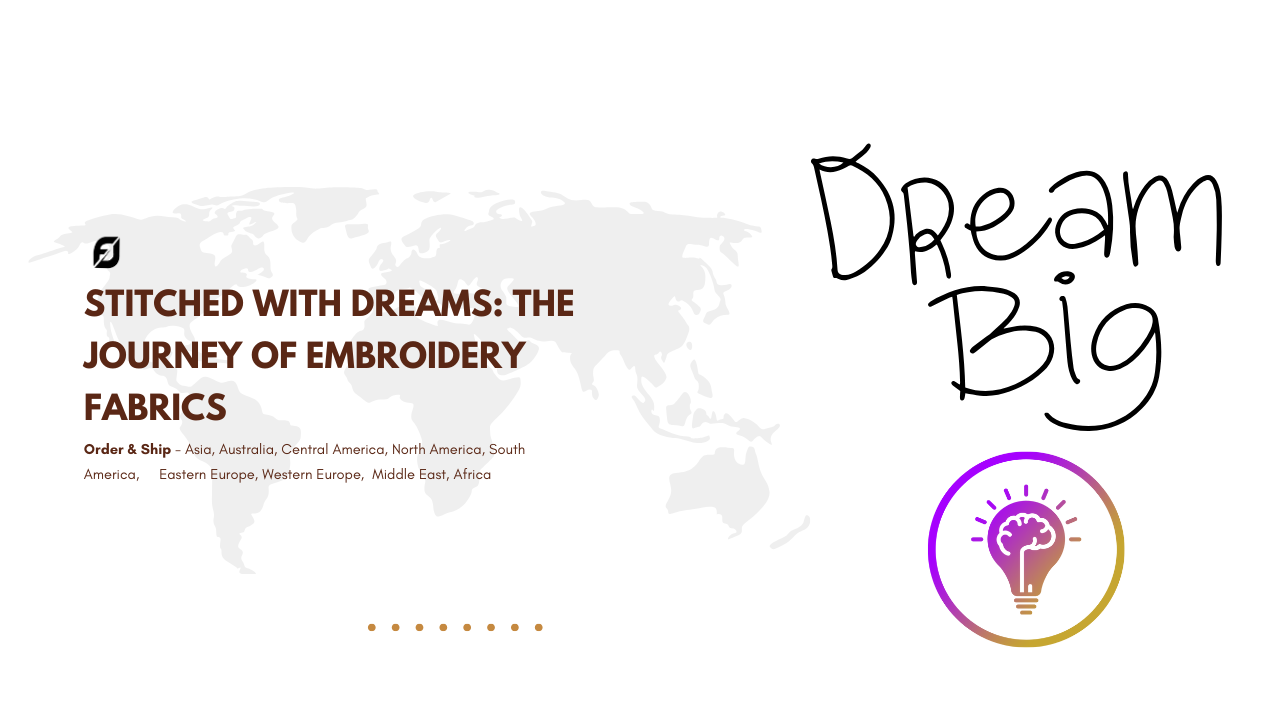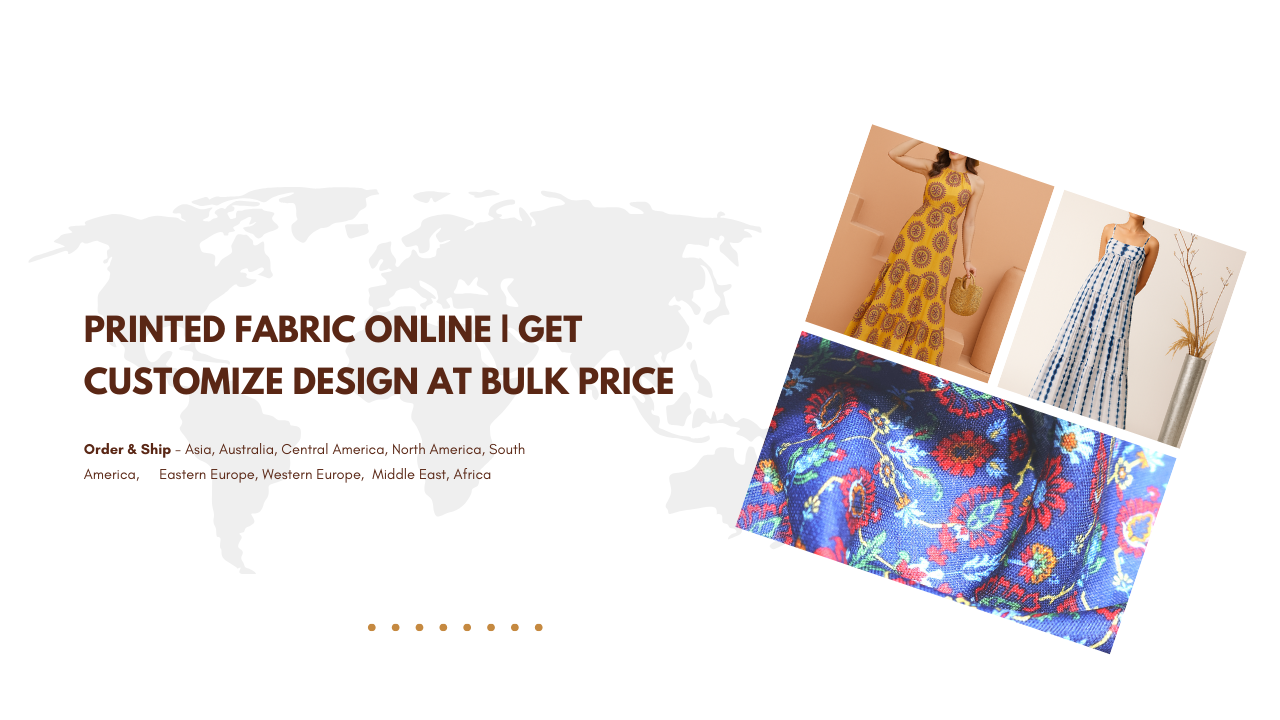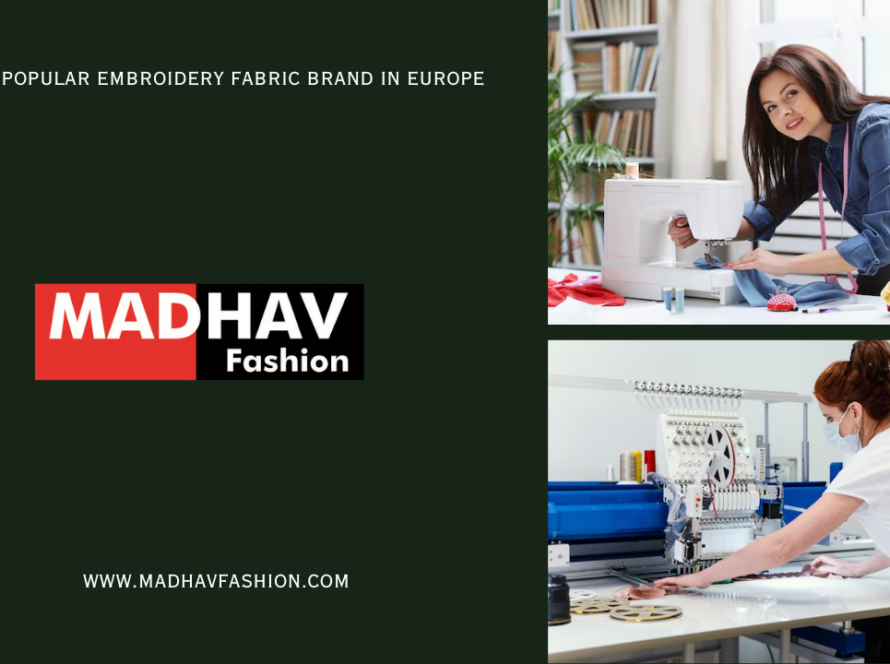In the vast world of fashion, fabric is the foundation — but embroidery? That’s where the magic begins. From the regal palaces of Rajasthan to the high-fashion ateliers of Milan, embroidered fabrics have been shaping the identity of garments for centuries. They carry heritage, express individuality, and offer an unmatched aesthetic value that transcends both time and geography.
At Madhav Fashion, we are proud to be part of this global story. While we offer a curated range of embroidered fabric solutions, we believe in their limitless potential. With just a few versatile patterns, it’s possible to create an entire world of fashion — be it traditional, modern, or something beautifully in between.
Embroidered Fabrics and Patterns
So, whether you’re a designer looking for your next muse, a fashion enthusiast curious about textile art, or someone exploring fabrics for a special occasion — this guide is for you.
What is Embroidered Fabric?
Embroidered fabric is any textile that has been decorated with needlework, typically using thread, but often also incorporating beads, sequins, mirrors, or metallic elements. Unlike printed patterns, embroidery adds dimension, richness, and craftsmanship to the fabric — transforming it from simple material to wearable art.
- The key elements of embroidered fabric include:
- Base fabric (cotton, silk, georgette, net, velvet, etc.)
- Embroidery thread (cotton, silk, rayon, metallic, etc.)
- Embroidery type (hand, machine, computerized, 3D, etc.)
- Pattern or motif (floral, abstract, geometric, cultural, etc.)
Why Embroidery Matters in Fashion
Embroidered patterns are not just design elements — they tell stories. A single embroidered motif can carry cultural significance, personal expression, or even political meaning. Across time and region, embroidery has played a role in rituals, weddings, celebrations, and more.
Here’s why it continues to matter in modern fashion:
- Timeless appeal: Embroidery never goes out of style — it evolves.
- Versatility: Works for bridal, formal, casual, and luxury wear.
- Craftsmanship: Adds value through artisanal detail.
- Global recognition: From Japan’s Sashiko to India’s Zardozi — each culture embraces embroidery.
- Fashion-forward: Embroidery remains a favorite on runways and red carpets.
Types of Embroidered Patterns You Should Know
Now let’s talk patterns — the heart of embroidered design.
At Madhav Fashion, we work with a focused set of high-impact patterns that are versatile, elegant, and globally appreciated. Here’s a breakdown of the top styles that inspire garments around the world:
1. Floral Embroidery – Nature’s Favorite Pattern
Florals are perhaps the most widely used embroidery motif in the world. Their soft, graceful lines mimic natural beauty, making them ideal for both traditional and Western outfits.
- Applications – Bridal lehengas and anarkalis, Summer dresses, midi dresses, Blouses, crop tops, and gowns
- Popular Styles- Roses, vines, lotus, cherry blossoms, Dense floral borders vs. scattered floral motifs
- Cultural Roots: Indian florals in South Asia, European botanical embroidery from the Renaissance
2. Geometric Patterns – Minimal Meets Modern
Clean lines, repeated shapes, and symmetry define this style. It’s great for sharp silhouettes and modern garments.
- Applications- Western jackets, pantsuits, tunics, Indo-Western wear and scarves.
- Popular Styles- Zig-zag lines, triangles, squares, Mandala-inspired circles
- Who it’s for- Urban fashion, Unisex garments , Youth-forward fashion labels
3. Paisley & Cultural Motifs – A Global Classic
Paisley is instantly recognizable — teardrop-shaped, with roots in Persian, Indian, and Middle Eastern art. It’s rich, traditional, and elegant.
- Applications – Wedding wear, sarees, sherwanis, Embroidered scarves, jackets
- Other Cultural Motifs – Moroccan tile designs, Chinese dragons and clouds, Japanese fans and cranes
4. Abstract & Contemporary Embroidery
Modern designers love freedom, and abstract embroidery gives just that. This style defies structure — focusing on unique shapes, textures, and expression.
- Applications- High-fashion gowns, Experimental fashion pieces, Custom couture
- Why choose it? It’s perfect for fashion brands that want to stand out with something artistic and unpredictable.
5. Metallic Thread & Mirror Embroidery – Glamour That Shines
Used heavily in Indian festive wear and Western eveningwear, metallic threads (zari, lurex) and tiny mirrors bring sparkle and luxury.
- Applications- Bridal couture, Red-carpet gowns, Party-ready jackets and blouses.
- Popular Regions- Gujarat’s mirror work (Abhla embroidery), Zardozi from Lucknow, Contemporary use in French fashion houses, Embroidered Fabric for Every Garment Style
One of the myths about embroidered fabrics is that they’re only for bridal or traditional wear. That’s far from true.
Let’s look at the wide range of garments you can create using embroidered fabrics:
1. Wedding Outfits For Brides: Lehenga, gown, saree, sharara
For Grooms: Sherwani, kurta-pajama with stole
2. Indo-Western Fusion, Long embroidered jackets over pants, Kurti with embroidered yoke, Palazzo suits
3. Western Fashion, Embroidered crop tops, midi skirts, maxis, Bomber jackets, denim with thread work, Embroidered sleeves on formal shirts.
4. Daily and Luxury Casual, Embroidered tunics, Boho dresses with patchwork, Kaftans with neck embroidery
5. Accessories, Dupattas, shawls, scarves, Handbags with embroidered motifs, Footwear with thread and bead work, Embroidered Fashion Around the World, Every culture has embraced embroidery in its own way.
Here’s a quick world tour:
- India: Zardozi, Chikankari, Phulkari, Kantha
- China: Silk embroidery with dragons and flora
- Japan: Sashiko – white-on-blue functional stitching
- Europe: Rococo embroidery, lace with thread work
- Middle East: Heavy gold thread work for ceremonial wear
- Africa: Beaded embroidery patterns
- South America: Bright, floral embroidery on linen
This proves that embroidered fabric is truly universal.
Why Choose Madhav Fashion for Embroidered Fabrics?
While we may offer a select number of embroidery patterns, our focus is on quality, usability, and creativity.
- What sets us apart: Premium base fabrics (net, silk, velvet, georgette), Durable, high-finish threadwork, Colors and patterns aligned with global trends, Fast support and reliable delivery,
- Suitable for custom tailoring, boutique orders, and bulk garment manufacturing.
- We cater to: Fashion designers & labels, Wedding couturiers, Small apparel brands
- Individual creators – How to Choose the Right Embroidered Pattern for Your Garment
Here’s a quick guide to help you decide:
Garment Type Suggested Pattern Bridal Lehenga Heavy floral or paisley Evening Gown Metallic thread, abstract Casual Kurti Small geometric or floral Sherwani Heritage motifs, symmetrical patterns Jacket Geometric or mirror work Western Dress Abstract or modern floral
Still unsure? Contact our team — we’re happy to help match fabric to your vision.
Fashion is Woven in Threads
In today’s fashion world, details define design. Embroidered fabric is no longer just a trend — it’s a timeless technique that connects generations, cultures, and creativity.
At Madhav Fashion, we don’t just sell fabric. We provide the raw material for imagination — the thread that turns an idea into identity.
So whether you’re designing for the ramp, the aisle, the party, or everyday elegance — trust in embroidery. Trust in patterns that speak without words.
Discover our collection. Get inspired. And let’s stitch the future together.
Want a personalized recommendation for your next garment? Connect with our design team at fabricdairy.com — we’ll help you find the perfect embroidered fabric for your dream look.






